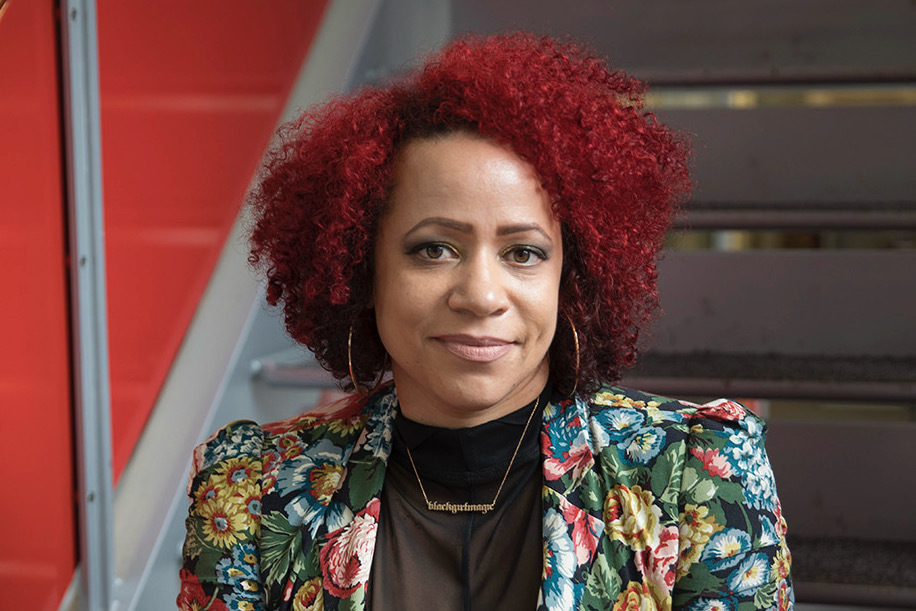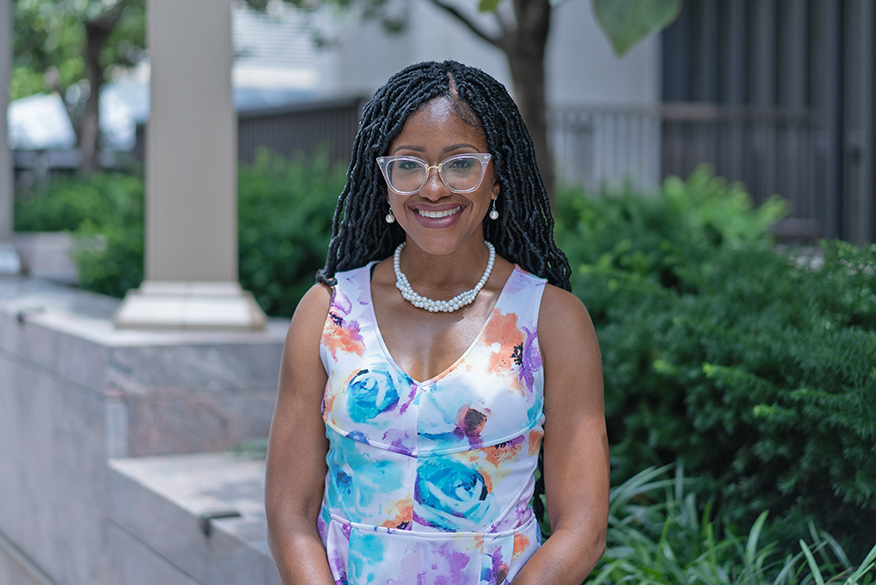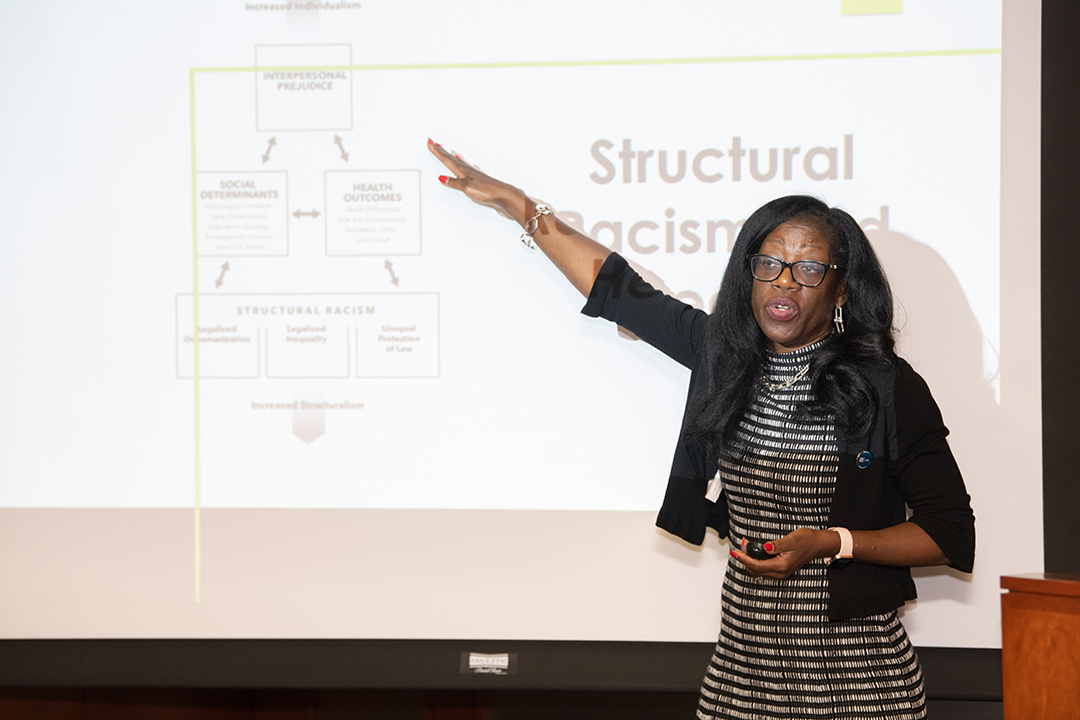Racism has to be understood as a social and political construct central to the narrative of this country’s founding and the lives of Black Americans in order to grasp its impact on their health, according to Nikole Hannah-Jones, the creator of Pulitzer Prize-winning The 1619 Project, who kicked off a training series for health professionals at George Washington University’s School of Medicine and Health Sciences (SMHS).
“If we are talking about Black American people in the Americas,” said Hannah-Jones, “the idea and concept of race was constructed to justify the economic system of slavery and so race becomes a political structure that determines hierarchy in the society… political rights, citizenship and who can be enslavable and who is not enslavable.”
“We don’t have to personally hold racial animus to be part of a system that racially harms and racially helps different groups of people.”
The webinar on Wednesday, “Confronting U.S. History: We Must End Racism to End Health Disparities,” was sponsored by the Gilead Sciences Inc.-funded SMHS Two in One Model, an 18-month research-informed training program for primary care physicians across the United States. SMHS assistant professor Maranda Ward of the Department of Clinical Research and Leadership, who leads the Two in One program, said the training covers a range of topics that would “historicize and contextualize HIV and COVID disparities among racial, ethnic, sexual and gender minoritized patients.”
Ward said the objective of the discussion with Hannah-Jones “relates the history of U.S. slavery to poor health outcomes among [Black Americans] so we will be able to recognize the enduring impact that racism has as an ongoing threat to both racial and health equity.”
The presentation was in partnership with the SMHS Office of Diversity and Inclusion as part of the SMHS seventh annual Dr. Martin Luther King Jr. lecture series. This year’s theme is “Advancing the Dream: Why We Can’t Wait,” taken from the title of King’s 1963 book explaining why he was opposed to a gradualist approach to achieving equity in civil rights.
Jones, who now serves as the Knight Chair of Race in Journalism at Howard University where she founded the Center for Journalism and Democracy, explained structural racism and structural inequality using the example of redlining, a post-World War II policy of the U.S. government that insured home loans to build the middle class in this country but excluded neighborhoods in which Black people lived, drawing redlines around those neighborhoods, essentially forcing segregation and disinvestment. The consequence of the policy, she said, persisted long after the 1968 Fair Housing Act made it illegal.
“We had this very explicit policy that extracted wealth from Black communities,” Hannah-Jones said, “that deprived Black America from the primary driver for wealth in this country, which was home ownership.”
Housing segregation became an efficient tool of structural inequality that is linked to the health and well-being of Black people, Hannah-Jones explained, keeping them separate from the rest of society. And that made it easy to deprive Black people of everything else.
“We know Black people are suffering more from chronic illness,” Hannah-Jones said. “It is not because they are descended from Africa. It is because they live in a society that has treated Black people as a racial group at the bottom of a system.”
“We live in a toxic environment, have higher stress that we know is disastrous for our bodies. On top of that … we face individual racism from health practitioners who the research has shown don’t believe us when we talk about our pain, who think Black people have a higher tolerance for pain, who think Black people are not going to follow through with what doctors recommend.
"So we are less likely to get certain tests. We are more likely to be diagnosed later than other people, and we’re less likely to have access to health care in the first place.”
Grace Henry, an SMHS assistant dean for diversity and inclusion, conducted a Q & A from questions submitted live during the webinar. Several questions focused on what institutions can do proactively to maintain diversity goals if, as many legal scholars assume, the U.S. Supreme Court overturns affirmative action cases now being considered.
Hannah-Jones responded that affirmative action was designed to address the legacy of slavery and apartheid that kept Black Americans by law from attending all white universities in the South and many universities in the North, not to create diversity.
She said she would rather see lineage programs that target Black and Indigenous people much like the legacy admissions programs for students whose parents attended or donated to institutions.
“Lineage based programs get to why Black Americans face disadvantage in our society,” Hannah-Jones said. “We don’t face disadvantage because we are Black. Black is a made-up thing. The laws passed against the people who have been called Black, all the disadvantage, was to maintain the hierarchy [created by] slavery.”
For those who missed the live streamed webinar, Hannah-Jones recorded a separate discussion specifically for the SMHS Two in One Model’s clinician toolkit as part of the continuing medical education-bearing, online asynchronous course within this training series. Join the mailing list to gain access to this webinar and the other upcoming eight monthly webinars.




